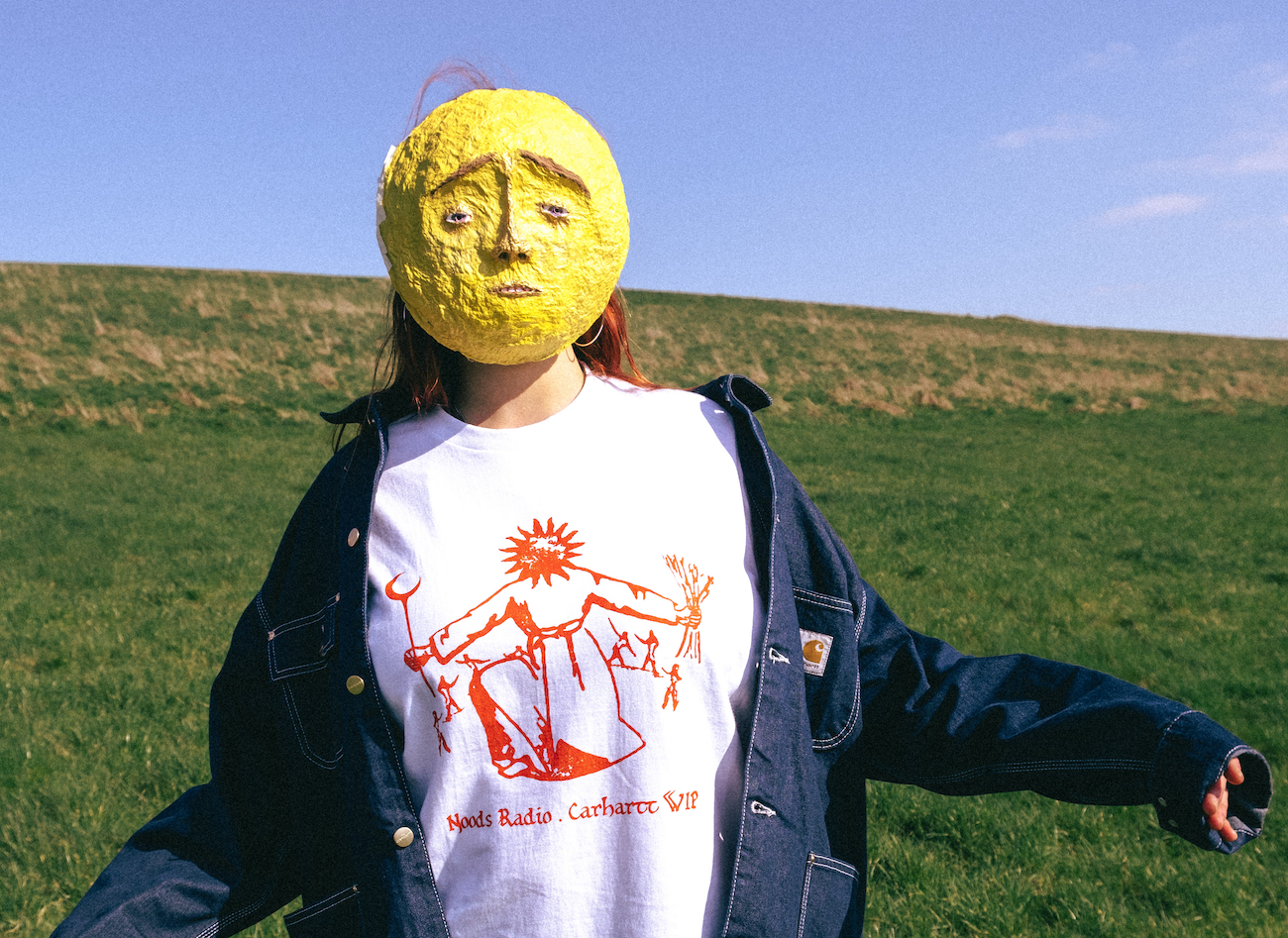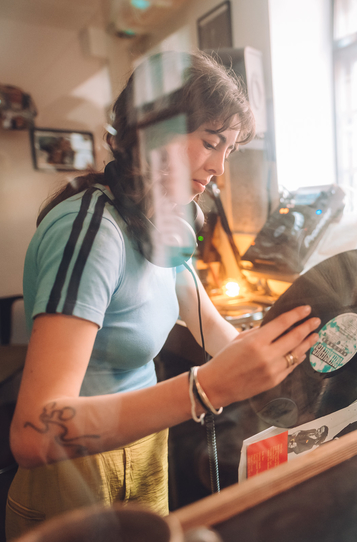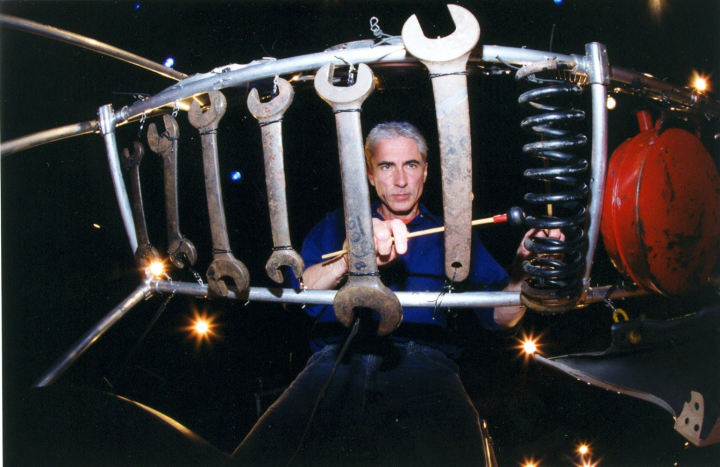
Donald Knaack: Producing the Environment
Record collecting is a habit characterised by its flagrant disregard for deep appreciation.
Record collecting is a habit characterised by its flagrant disregard for deep appreciation. The imperative is to accumulate and not to appreciate. This is what I’ve learned from twenty years feeding a bizarre and ruinous impulse to collect discs that I will rarely play more than twice and seldom ever cherish. Instead, there is always a nervous twitch in my brain to head back into the digital dustbin and find more to add to the collection.
A rare moment of temperance came upon me earlier this year during which I stoically convened with myself and asked if, rather than just buying a shitload of new records that I’d shelve and forget about, whether I should spend some time investigating an artist I’d been meaning to research. Therefore I hit the pause button on the buying activity and decided to explore the life and work of US percussionist and environmental educator c.

I first came across Knaack’s music on a compilation 12" and was struck by its singularity. “Built to Fall Apart” was a big and brooding slab of industrial funk, that chugs along at hip hop tempo hitting with you wave after wave of clattering percussion and dense wafts of brawny bass synth. Later I started to hear the spoken word curio “Cash Flow” featuring in DJ sets from the elite diggers (Jaz, Zaltan et al), an off-kilter piece of experimental synth-funk topped off with a fabulous snark about the dishonesty of bullshit promoters.
With curiosity well and truly piqued I was surprised to see that, according to his Bandcamp, Knaack was now based in Bristol. Seeing this as a sign to act I reached out to Don and arranged a phone interview for my radio show, A Better Break. Following a series of in-depth conversations, I came to know a great deal more about Don’s life in music and found a career characterised by its diversity yet united by the goal to foreground the protection of the environment as both a means and an end. I was able to discover conceptual underpinnings to his music that are of critical importance to us as global citizens facing an uncertain future, and on a personal note had the pleasure of getting to know a warm, intelligent and incredibly perceptive individual.
Conan or Fran
“There was a red button on the wall labelled EMERGENCY, but no button labelled BEWILDERMENT.”
Genuine moments of Dadaist absurdity don’t come thick and fast in the hyper polished format of the US talk show. But thanks to Donald Knaack’s 1997 appearance on the Late Show, viewers were treated to seeing a thoroughly unburnished Conan O’Brien struggling through an improvised dance routine whilst Donald joyfully played a percussive jazz routine on a “playstation” — a Heath Robinson trap set of Knaack’s own invention comprising of scrap metal and other salvaged materials assembled into something that would look at home on the set of Mad Max.
The segment as a whole offers a televisual moment that is spellbinding to watch. With the interplay between Knaack’s ebullience and virtuosity on his junk instruments poised against O’Brien’s simultaneous bewilderment and delight; one gets the feeling that such emotions are rarely felt by a chat show host whose usual default is position is that of fawning interlocutor with the insipid PR dribble of A-list chair meat.
Around a similar time, Knaack was interviewed on PBS by Fran Stoddard, a suitable percussively inclined interviewer by dint of her passion for taiko drumming. Interviewed alongside jazz drummer Matt Wilson the mood is a mixture of bonhomie and contemplation, with equal space for wit and more serious percussion discussion. Knaack is thoughtfully questioned on his practice and expands on how his affinity for the sounds of junk proceeded from early childhood pan banging and grew into an adulthood obsession for the expanded palette of sound colours that the junkyard had to offer. No gimmicks or gags here, just meaningful discourse and an opportunity to get a real sense of what makes Knaack tick.
The difference between these two clips when watched one after the other perfectly frames the polarities between the approaches that one can adopt to understand the world of Donald Knaack. Do you go the Conan route and offer a superficial gloss on the absurdity of banging discarded metal, recording the results and proclaiming it to be music? Or do you opt for a Fran approach, where you ask a sensible question and then sit back and listen with an open mind to Knaack’s music and rationale, in turn allowing yourself to consider the narrow scope of the sonic palette in traditional music. I’m a Fran man.
With this in mind let us move now to look at some of the individual releases that make up Knaack’s back catalogue, starting with his first release in 1977.
Duchamp and Cage
“Any sound is acceptable to the composer of percussion music: he explores fully the academically forbidden “non-musical” field of sound insofar as is manually possible”
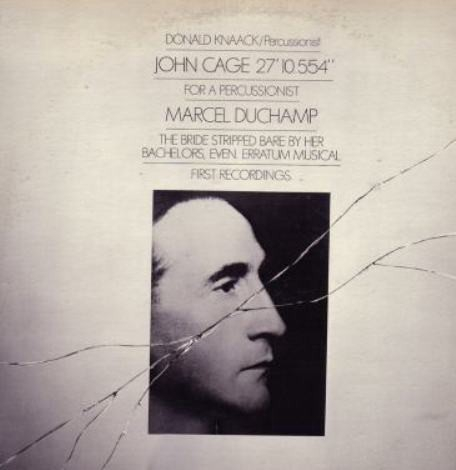
When a young Donald Knaack entered musical training he found himself in the orbit of Cage and other like-minded thinkers who were not wedded to a traditional view of music and sound. However, there was perhaps only a gentle amount of encouragement that Knaack needed to break free from the constraints of the restricted timbral palette of traditional percussive materials and dive into the world of junk.
Formative experiences in the workshop of his mechanic Father exposed Knaack to the sounds of car tools dropping on the floor and primed his ears to the sonic richness of metal. Cage’s ‘Constructions’ would have been all the impetus Knaack needed to continue in his junk explorations. Building from the early forays into junk music exemplified within ‘Constructions’, Knaack quickly found himself bound to an artistic practice that eschewed the limited musical tools of the traditional concert percussionist and instead, looked to the expansive world of everyday objects to fill his percussive arsenal.

The Cage pieces delve into the last work from Cage’s 10,000 things project. The ideas of Duchamp are still here but with Cage’s own gloss added. Chance procedures dictate the compositional process and instrumentation choices are left open to the performer. Cages revolutionary notation system of sound events create works that are highly sculptural and Knaack’s recording is exactly that. With clusters of abstract percussive flutters and trills set against large open caverns of silence ready to be filled with the unique ambience of listeners environ. Anything from traffic noise to the pops and clicks the listener's disk and stylus can become part of the openwork.
As the first outing on vinyl, it is chronologically sensible for anyone new to Knaack to start here, but it's also a highly illustrative beginning as it sets before us the intentions of the young musician. Hungry to explore the sonic potential of open systems and avant-garde forms of expression these would be recurrent themes that dictate the practice throughout his career.
“Tools that are no good require more skill.”.
This piece of Duchampian philosophy has since become Knaack’s mantra. It embodies an approach motivated by a dissatisfaction with the limited palette of sound colours that Knaack had at his disposal whilst in the Buffalo Philharmonic and the Louisville Orchestra. The received wisdom that many accept obediently is that musical instruments are the only noise-making equipment that will produce tones pleasing to the ear. The incidental noises we hear in everyday life are part of the non-musical background of noise that we should keep separate from real music.
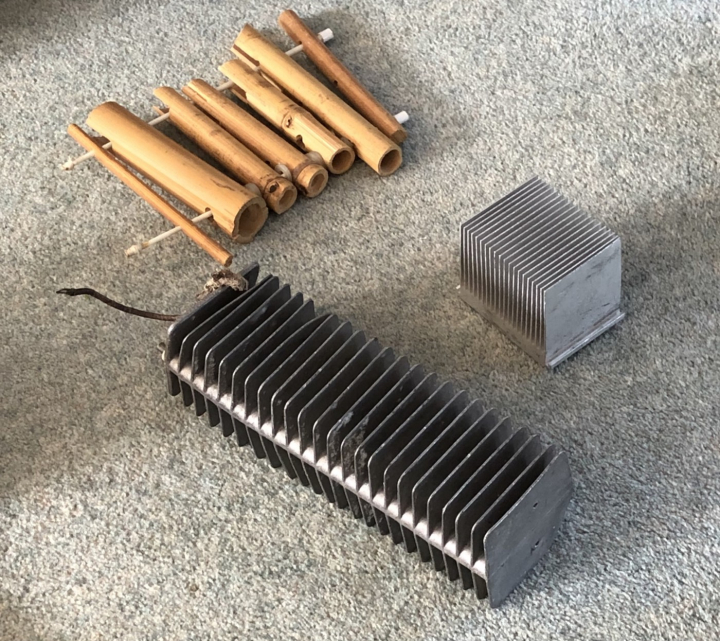
“Why can’t a tree be called Pluplusch?”
For Knaack, the categories of musical and non-musical noise are at the very least questionable and in practice entirely surmountable. Stemming from boyhood experiences absorbing the tuneful cacophony of metal on metal in his Father’s workshop, Knaack became a keen advocate that the noises of everyday life, those elicited from the tools of industry and domesticity hold a latent potential for music. As such, they need to be considered as no less worthy than the esteemed canon of string, wood, brass and percussion instruments. In Knaack’s mind, your kitchen, your garden shed and your garage can offer musical instruments capable of making a glorious sound, they simply need their players to approach the act of playing with more thought and ingenuity than is the case with “real” instruments.
Inside The Plastic Lotus
Following the Finnadar release, Knaack made a brief departure into the world of electronic experimental music with the concept album “Inside the Plastic Lotus”. Based on experiences that Knaack had whilst in LA, the ten tracks of the album seek to communicate some of the twisted logic and façade that make up the land of opportunity. The lotus is something of a flora miracle. A highly beautiful and decorative flower that manages to somehow exist and draw nutrition from the harsh and uninviting bacterial ponds and swamps of the world. As such, it provides an emblem for what Knaack was seeking to convey within the album. With the musical creations symbolic of the beauty arising from the ugliness of LA’s swamp of hustlers and egos.
Tracks on the album are gloriously disparate. “Cash Flow” pairs a loose funk drum groove with a bulbous sinewave bassline atop which a slick/slack promoter spins a yarn on “gig economics” replete with the kind of non-sequiturs that makes one's skin crawl. “Déjà vu Lullaby” is a gorgeous dreamlike synth ditty which shimmers with an iridescent beauty, much like the albums namesake flower sitting atop a sun-dappled pond.
Dance Music
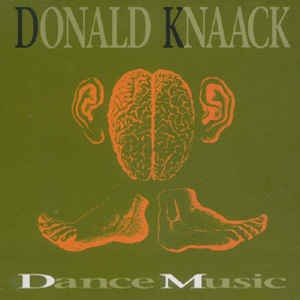
Appearing in 1994 Dance Music, released on Ron Lessard’s legendary RRRecords, collects together a selection of pieces from Don’s commissioned work for dance and theatre. “Confines”, a three-part piece written for The Lewitzky Dance Company, and “Dance Music I and II” written for Warsaw Autumn Festival of Contemporary Music make up the nearly hour-long CD-only release. Sonically a lot of the music on the CD shares many of the same characteristics as the Duchamp/Cage release. Long electro-acoustic and ambient sound sculptures with the patterns of crescendo and release befitting the visual drama of live dance and ballet.
The Dance Music CD really only offers a snapshot of Knaack’s work done within dance and ballet. In a recent phone conversation Don self-described his work within theatre and dance as running like a wave through his career with the ebbs and flows of activity involving work with Twyla Tharp Dance Company, The Kennedy Center, American Dance Festival and American Ballet Theatre amongst many others. A lot of that work remains undocumented and will live only in the minds of those who witnessed it (or on Don’s hard drive!) and therefore Dance Music is an important moment in the back catalogue of Knaack.
Junk Music 2
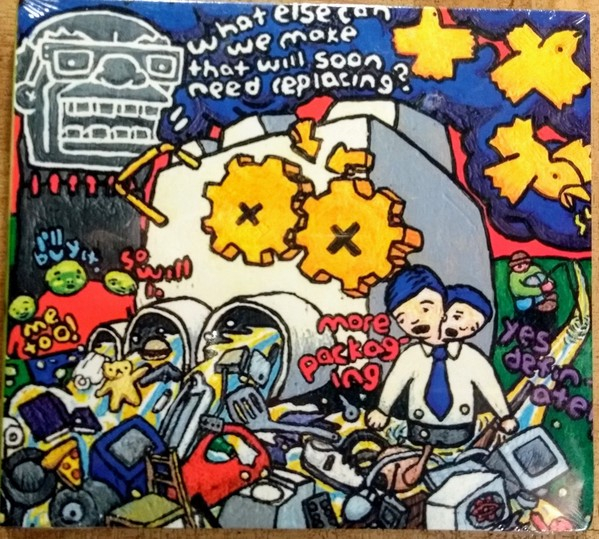
By 1996 Knaack had taken a name given to him by an impatient student and adopted it as his production moniker. The first Junkman album was a potent stew of Knaack’s percussive ability and the rich timbral palette afforded to him by the huge arsenal of junk instruments that he had painstakingly crafted and refined. It is with the second album however that the junk music gains vigour and intensity that is enthralling. The musical intensity is matched with confrontational track titles such as “Styrofoam Never Dies” and “Mantra for a Polluter’s Grandchild”. Whilst the first album was an exercise in showcasing a playful display of the sonic potential of junk, the second album is an exercise to communicate the gravity of the environmental crisis facing a planet ravaged by the effects of rampant and vampiric forms of late capitalism.
Some of the musical standouts on the album include the monumental and stirring industrial bruiser “Built to Fall Apart” and the propulsive ghoulish techno assault of “Abracadabra”. What is remarkable about the music on the album is the elan that Knaack has cultivated in his playing and processing of junk materials, and as such it is impossible to discern the humble origins of the source material. It bears testimony to the strength of Knaack’s conviction to his Duchampian mantra of “Tools that are no good, require more skill”, whereupon drum machines and synths are dispensed with in favour of more unprepossessing sound units yet the same results are yielded.
For Knaack, the music of Junk Music 2 also afforded the highest proportion of licensing requests of all his albums. Both “Built to Fall Apart” and “Abracadabra” have been picked up and used by a host of household names including Nike, ESPN, EA Games and Powerdot. The visceral nature of the tracks lend themselves to the shock and awe requirements of advertisers, and the slightly paradoxical nature of these giant companies who encourage our rampant consumerism using recycled music makes it all the more compelling. If ever one wanted to send a trojan horse into the midst of the blue chips one couldn’t find a better vehicle than the sonic power of Knaack’s junk music.
Facing the Future
Current projects that have occupied or are occupying Don’s time include composing a plunderphonic plea to the world to take notice of President Trump's lack of engagement with globally adopted prophylactic public health measures to stop the spread of the COVID-19 pandemic.
Knaack is also working with a local musician and software developer to help him develop a novel design for an instrument that will house an instant access digital repository of his junk sounds and thus will dispense of the need for Don to travel “heavy” with boxes of his junk, and instead travel to gigs with a new carbon footprint 95% lighter than before.
Knaack’s parody single that seeks to highlight the staggering inconsistencies in Trump’s COVID rhetoric
Knaack’s agile and forward-facing mindset prioritises the need to respond to the requirements of a transition from the industrial age to the technological age. As well as reducing his own carbon footprint Don looks to facilitate others to reduce theirs as well. Thus the global junk jams that Don curates every year offer an opportunity for people from the furthest parts of the globe to congregate in a digital hangout to celebrate Earth day, play music communally and share ideas. The rationale for doing so is beautifully expressed by Don himself below….
“Today, in an era where the concepts of tolerance, ethics, and inclusiveness are, once again, at risk, it has become essential to teach a new, holistic environmental message which, in addition to the protection of our air, soil and water, now includes respect for ourselves and others, confidence, kindness, teamwork, and anti-bullying.”
The global junk jams are part of Don’s life as an educator and as talk turns to his work with the next generation Knaack’s zeal for his didactic pursuits is evident. As a teacher, Knaack is ebullient about the immediately gratifying musical experiences that junk music can offer up to young novice players. Non-musical children, when faced with something as complex as an oboe, may baulk at the technique required to elicit a sound. But give them a tin can and a beater and they have the instant potential to make noise and in turn music via simple repeated rhythmic patterns. Music is in everyone Knaack claims, and in many tribal cultures, music and dance are part of everyone's life not bracketed away as past times for cultural elites or those with specific training.
This notion of breaking down barriers and encouraging open learning spaces is perhaps an unsurprising philosophy for Knaack to have developed given his early interest in the open-ended aesthetic principles of Duchamp and Cage. The questioning mindset that leads Knaack to make novel conceptual connections in his early career is what continued to stir him into action to interrogate the impact of his generation on the planet, and his response has been to generate an award-winning Help Our Planet educational program that inspires and encourages rather than lecturing to proselytise. Working in schools, Don’s aim is to give the next generation the tools that they need to work with one another to overcome and reverse the damaging environmental trends implemented by previous generations.
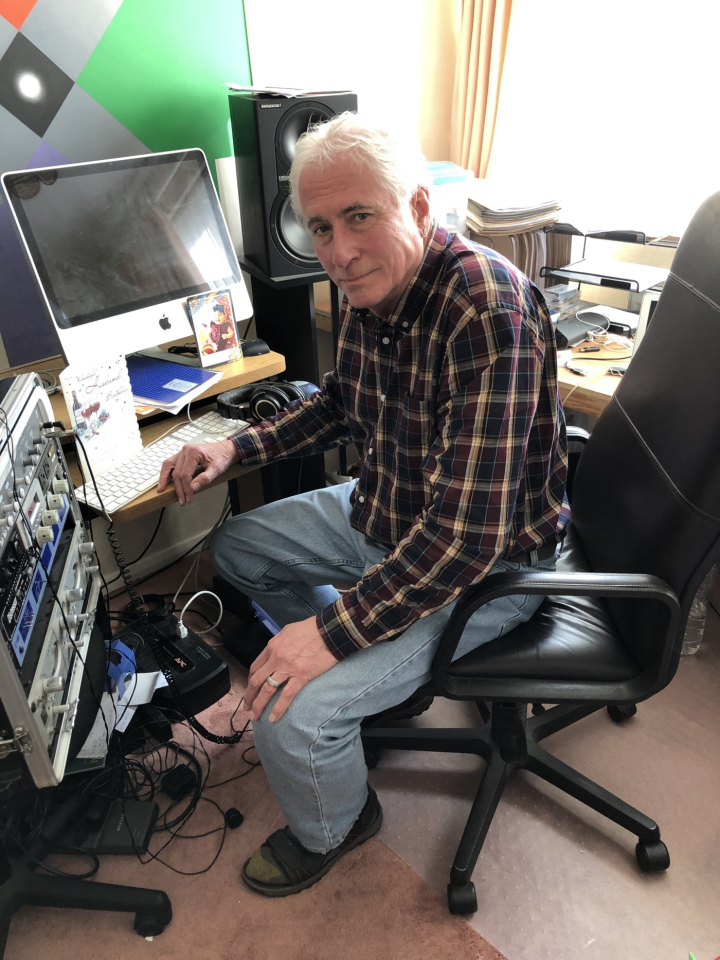
“Change is the nature of life. And not to grapple with this fundamental impetus to living is not only flying in the face of the facts but is moral cowardice. How I make music indicates my view of life. Like it or not I guess it is the same for all musicians — whether they know it or want to know.”
The words of fellow percussionist Eddie Prevost above are an apt place to conclude upon the importance of Knaack as a cultural figure. Throughout his long and varied career, Don has never shirked or shied from the imperative to grapple with change, as such his music and cultural work carries an admirable moral content that distinguishes him from other experimental metal bashers whose inward-looking gaze serves no one but themselves. Whatsmore one feels that very much that for Knaack the music he has made has never been made out of whimsy, instead, it has a substance to it that gives it a permanence at odds with the ephemerality of most pop music. In the mouth of an uncertain future, it’s heartening to know that the music of Donald Knaack will for me always be a source of inspiration to help grapple with the challenges that will face us all.
For more on the Junkman visit his websites:
www.junkmusic.online
junkmanvt.bandcamp.com
The accompanying interview with Knaack for Noods is below:
